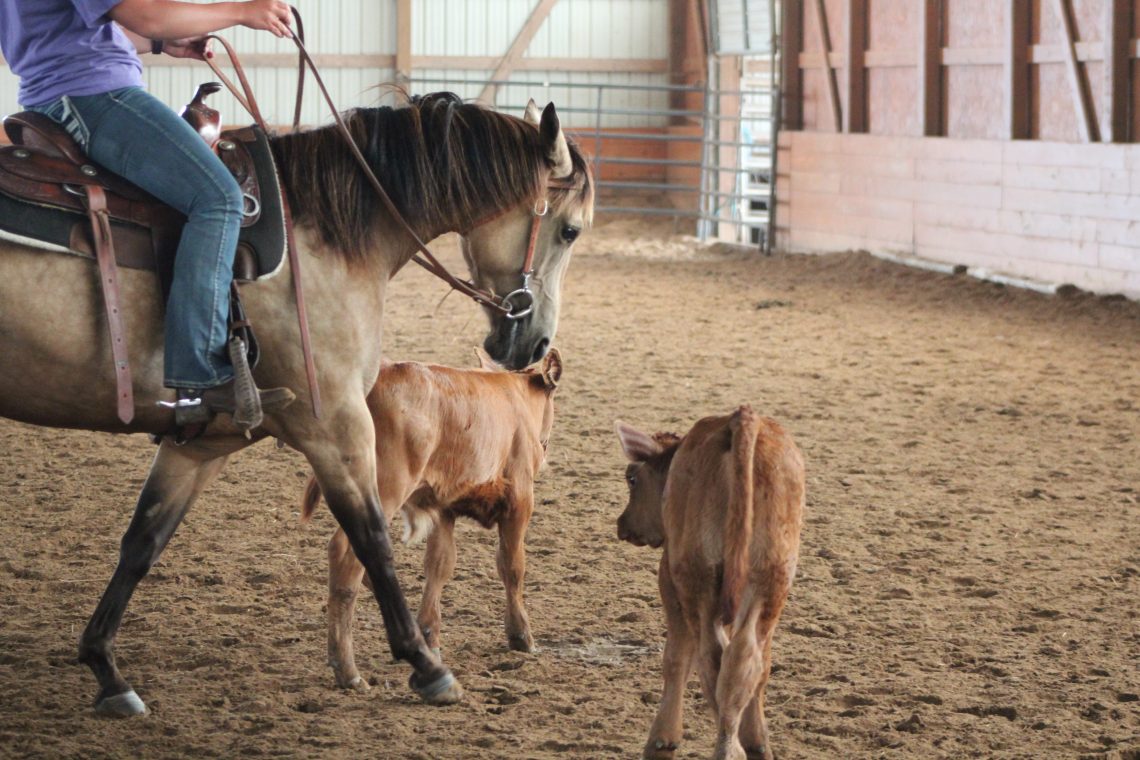
Cowabunga!
Blog: 11/26/2020
Let’s take a trip out west with the side of the American cowboy. In the show pen or on the open plains, cowboys are more often, than not, working vastly with their herds of cattle. In my blog for today I will talk about a few tips and important aspects for bringing up a great cow horse.
Western Horseman dives head first into their article with professional horseman and trainer Kory Pounds on the topic of training your horse for the cow classes. He believes in natural horsemanship, meaning that the horse should love his/her job and not jump the gun when the rider is asking the horse for a cue. It comes down to teaching the horse to “work the cow” (Pounds) on his/her own. Cows have a mind of their own just like horses but ultimately to work the cow well you need to judge and work the cow just as well as your horse.
Kory Pounds starts off with good communication between you and your horse. The horse should be very willing and focused on you and the cow too. To make this all happen the horse needs to be broke enough, or well trained, to the point it knows basic cues like stopping on their hind quarters (back end), soft in the mouth with little rein contact, but ultimately have consistent quality rides. But in the end the horse should be trained in a way by the cow or show great focus towards the cow. “Pounds believes some horses are so thoroughly trained that it’s difficult for them to focus on the cow. He prefers to introduce his horses to cattle earlier so that their movements are related to the cow, not to the rider” (Western Horseman).
His second piece of advice is when you’re starting a young horse, even a horse into the cow classes is to take it slow. If you want quality, consistency, and accurate rides in the show pen you need to start with the basics and slowly working the horse up. This will build confidence in the horse and trust between you both.
The next and 3rd step is to “challenge his mind.” Just like students or even adults in full time jobs the greatest way to learn is to face new challenges. Mixing up the horses training routine will, ultimately, make the horse a smarter competitor. “You don’t ever want to be more active than the cow is. The way to keep a horse mentally challenged is to take your time, step your horse to the cow and let him learn where it’s going to go. […] You shouldn’t have to be telling him that” (Western Horseman).
During a show or on the range, when the horse moves the cow the horse must be positioned correctly on the cow in order to move the cow in a particular way. This is where you need to guide the horse to find these pressure points on the cow until it becomes instinct.
The fifth point Pounds makes is allowing your horse time to reflect, read, or pause. Paying attention to your horse body language will show you when the proper time is to allow the horse to break. “This allows the horse to regroup and pay closer attention to the cow. Pounds stops for thinking time every time the cow stops, reverses direction or fades away from the horse” (Western Horseman).
Pound’s last words of advice is to “read and rate.” Don’t be eager to make a fast movement without review. “Horses have to rate a cow to a stop, rate a cow through the turn and rate a cow out of the turn” (Western Horseman). The difference between rating and reading is when the horse reads the cow it means to anticipate the cows next move. Rating a cow means to adjust its position and pace to the timing of the cows movement.
If you’re looking for more tips on training your cow horse I would highly recommend checking out the westernhorseman.com. I have also attached Ross Hecox’s article with Kory Pounds below.

One Comment
puji
Thanks for sharing